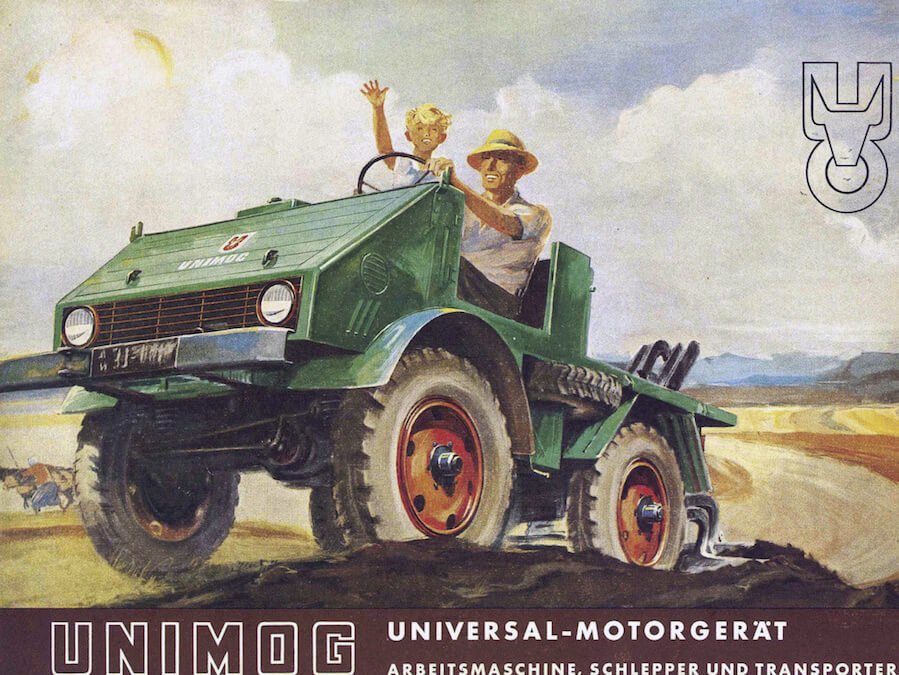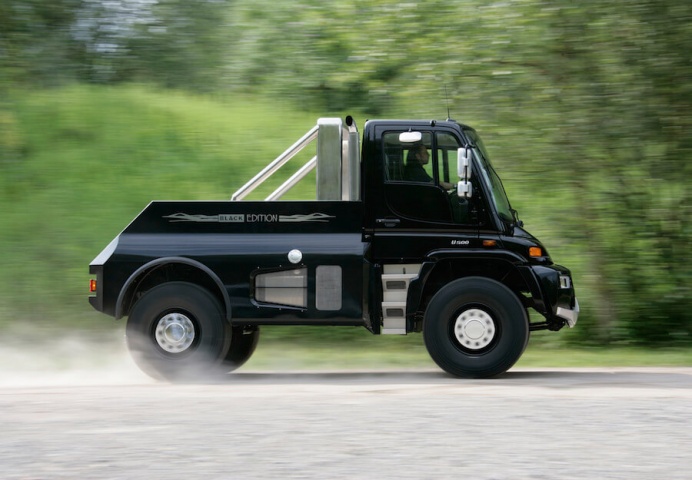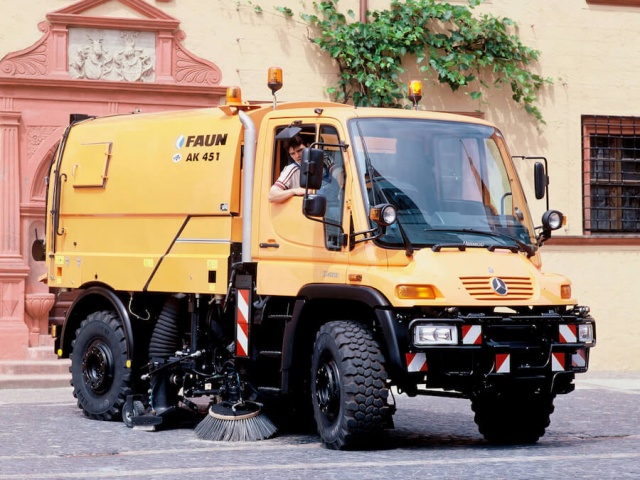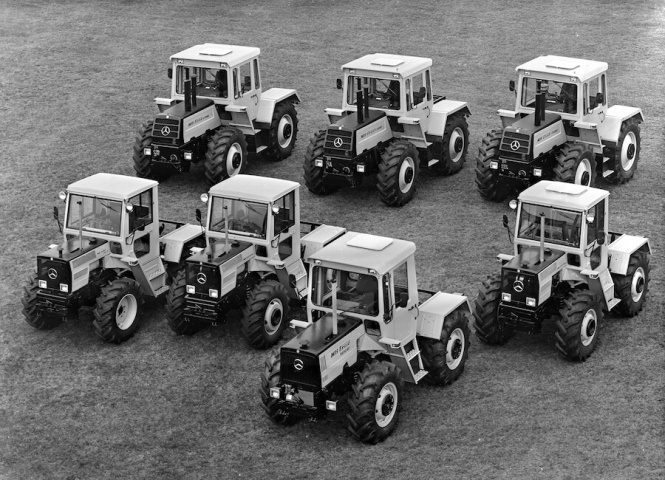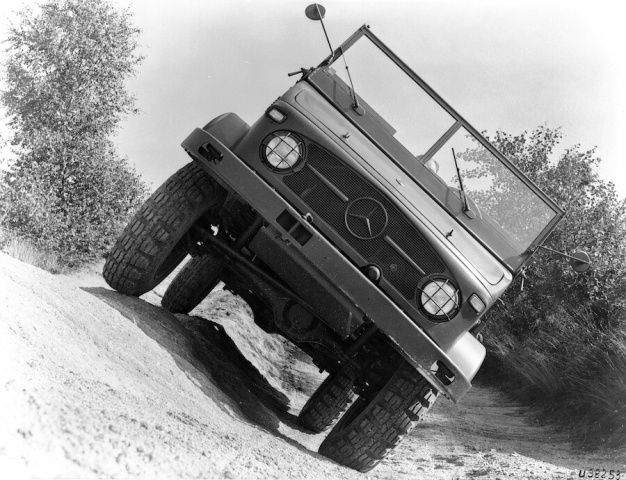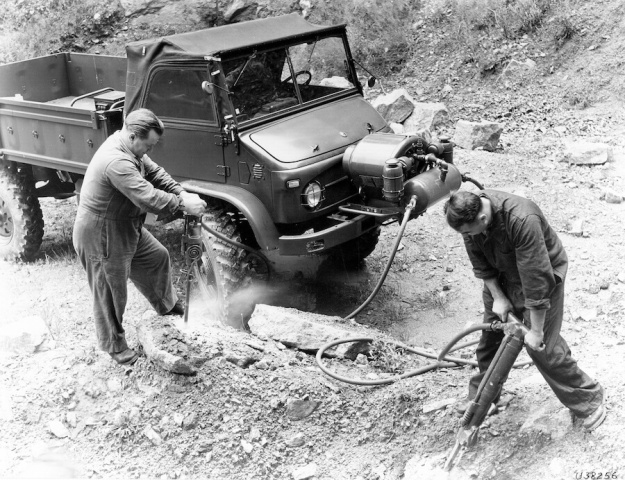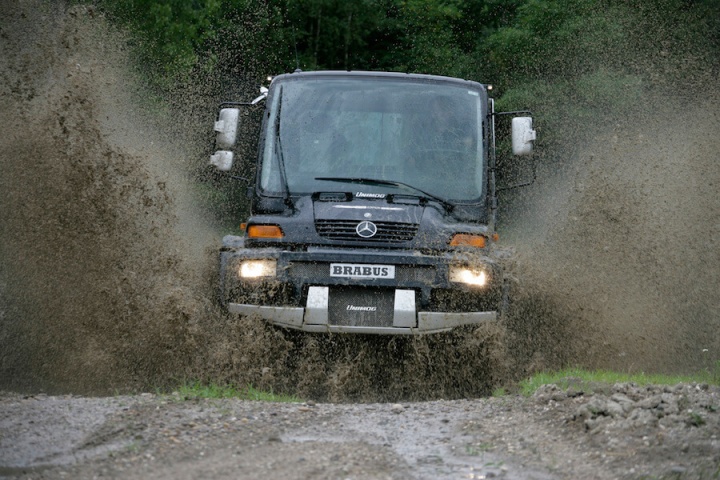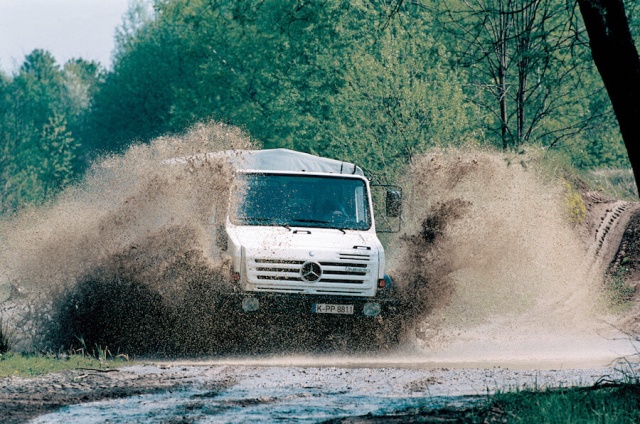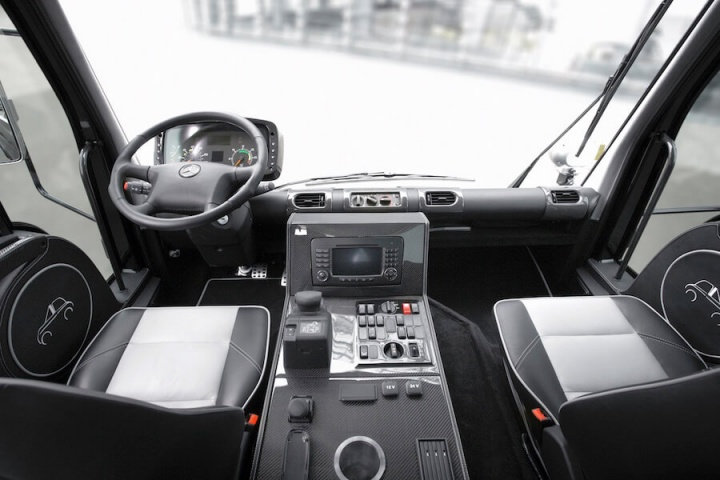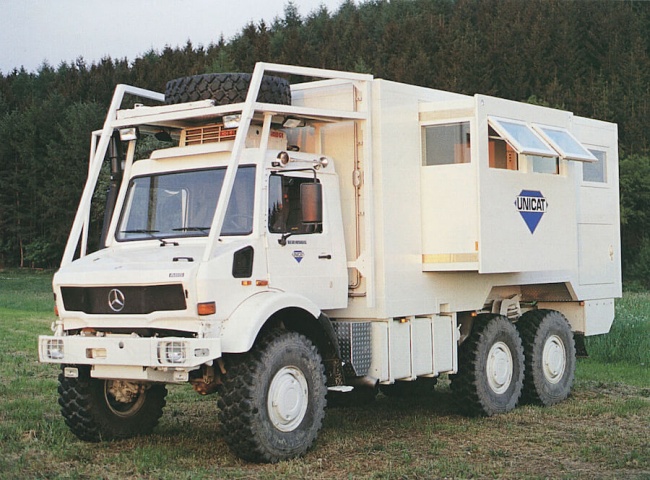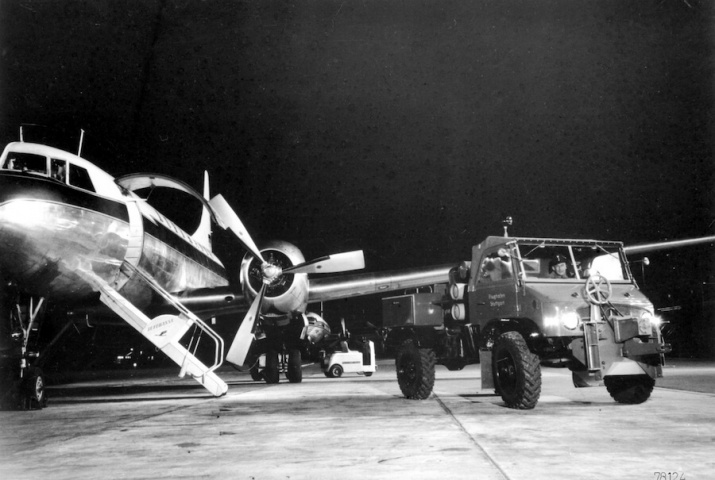I have never driven a Unimog, and that, frankly, makes me less of a man. Just as with my inability to grow a decent beard and my unnatural fear of socket sets, my lack of Unimog experience renders me less of the MacGyver-esque ideal man than I should be. Because, and I apologise here for the surfeit of sexism, the Unimog is a truly manly machine.
Which is not to suggest for a moment that a woman could not drive, enjoy or desire a Unimog, but I use the phrase manly in its sense of endeavour or adventure. A shame that it has to be pejorative, but there you go.
Of course, the Unimog was born back in a time when such worries were not yet recognised - in fact, the big, useful thing celebrates its 70th birthday this week. Born in 1946 from a design by Albert Friedrich, and originally built by Erhard und Söhne, the Unimog, much like the original Land Rover that was taking shape half a continent away at the same time, was designed for farming and hard work, but with its uniformly-sized wheels, it could be driven on normal roads at normal speeds, unlike a conventional tractor.
That first Unimog set a template from which subsequent models have not really deviated much, even if that original wheel track width of 1.2 metres was designed so that the Unimog could straddle two rows of potatoes...
Towering ride height was made possible by clever portal gears that allow the propshafts and driveline to be mounted higher than the centreline of the wheels, giving the Unimog incredible rough-terrain ability. The chassis was designed to flex and move in harmony with the suspension, giving massive wheel articulation just when you need it, such as when climbing over a one-metre boulder or three - something that the Unimog can do with ease.
Production of the Unimog moved from Erhard und Söhne to Boehringer, mostly because Mercedes was banned by the post-war Allied Control Council from building a 4x4 with obvious military potential. By 1951, such concerns were history and Mercedes took over the Unimog and the three-pointed star replaced the original Unimog badge of an ox's horns making the shape of a 'U'. Oh, and the name? Like so many classic German names, it's a contraction rather than an acronym - a shortening of Universal-Motor-Gerät.
Subsequent versions would do away with the simple, square, slope-fronted nose and introduce such things as curves and, after a certain fashion, style. In fact, in the seventies, there emerged two distinct types of Unimogs - a version with a rounded cabin that was meant for light work (a relative term in the Unimog-verse) and a version with a blocky, square cabin that was meant for serious work.
What are they used for? In working vehicle terms, pretty much everything. From road maintenance and sweeping to vehicle recovery, from forestry and farming to military use. Unimogs have been customised, weaponised and even rallied. There's an old, possibly apocryphal, story that the first Unimog class victory in the Paris-Dakar rally happened because one was being used as a support wagon for a faster vehicle, and it proved simply unstoppable... Other versions have carried everything from potatoes to howitzers, and towed everything from tanks to Jumbo Jets to trains. They can be fitted with tracks or six-wheel drive, or even little auxiliary drop-down wheels to allow them to use train tracks. Unimogs with snow ploughs are a common sight in Alpine regions, and surely these are the ultimate vehicles to have on your side when the zombie apocalypse strikes.
The Irish Defence Forces have used Unimogs as armoured scout cars, with the first versions coming into service in the mid-eighties - and you can see one on display in the National Transport Museum in Howth.
There is also an ultimate Unimog. Now, that's a loaded term considering the huge, almost innumerable versions and variants, but there is a gloriously insane Unimog Black Edition. Created by arch Mercedes tuners Brabus, it uses a 6.4-litre straight-six diesel engine, developing 286hp and a staggering 1,120Nm of torque. OK, so it weighs 7.5 tonnes and its maximum speed is just 100km/h, but it has lapped the Nürburgring Grand Prix track (the short version) in just under three minutes, so it isn't slow. It also looks like possibly the coolest vehicle we've ever clapped eyes on. Want, want, want, want, want, dear Santa etc.
Finally, the Unimog kicked off a legacy of on-road 4x4s for Mercedes-Benz. Just as its conceptually similar rival from the late forties, the Land Rover, begat a range of Range Rovers in the seventies, so too the Unimog got Mercedes, slowly, into the luxury 4x4 market. The original Gelandewagen, or G-Wagen, created by Pinzgauer in the seventies for the German army, the Bundeswehr, eventually became Merc's first off-roader, a rival in one body to the Range Rover and the Defender. That G-Wagen was originally designed to use as many parts and components as was practical from the Unimog, so that military and fleet users of both would be able to rationalise their spare parts storage.
Today, all of Mercedes' luxury 4x4s, SUVs and crossovers have badges starting with the letter G in honour of that original G-Wagen. Perhaps Merc should dip back farther in history and start a range of cars with U-badges. How manly would they be?

